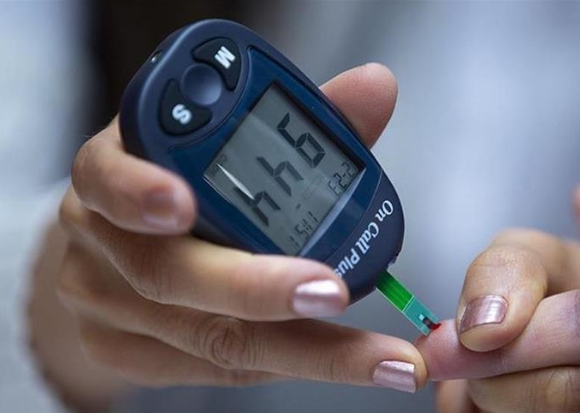A glucometer is a portable medical device designed to measure blood glucose levels. Also referred to as a blood sugar monitoring device, glucometers enable individuals with diabetes to measure and track their blood glucose independently. These devices serve as an essential tool in diabetes management, aiding in the maintenance of glycemic control. The primary function of a glucometer is to determine glucose concentration from a blood sample obtained via a fingertip. Today, glucometers are available in various brands and models, and their features may vary depending on the method of use.

Glucometer (Anadolu Ajansı)
Blood Glucose Levels
Carbohydrate metabolism in the human body occurs primarily through glucose, which serves as the main energy source for cells. Clinical laboratories can measure glucose in blood, urine, or cerebrospinal fluid (CSF). In fasting conditions, blood glucose levels in healthy individuals typically range between 70–100 mg/dL (normoglycemia). Fasting blood glucose below 50 mg/dL is classified as hypoglycemia, while levels above 100 mg/dL are considered hyperglycemia. The human body possesses robust regulatory mechanisms to maintain blood glucose within the normal range during feeding, fasting, and physical activity.
Structure and Operating Principle of Glucometers
Glucometers are biosensors that employ enzymes such as hexokinase, glucose oxidase, or glucose dehydrogenase, using either reflectance photometric or electrochemical detection methods. The glucose test strips used in these devices consist of multiple layers, each serving a specific function:
- Distribution/Separation Layer: Ensures homogeneous distribution of the blood sample and prevents erythrocytes from reaching the lower layers.
- Analytical Layer: Glucose in the plasma reacts with the enzyme, and the reaction is measured via reflectance photometry or an electrochemical system.
- Support Layer: Provides structural integrity to the strip.
In electrochemical glucometers, the electron flow generated by glucose in the sample is quantified as a digital value by the device.
Usage and Monitoring
Glucometers are used in diabetes management as point-of-care testing (POCT) devices. They are employed together with a lancet device and test strips. Measurement results can be influenced by factors such as user variability, fasting or postprandial state, abnormal hematocrit, hypotension, or acid-base imbalances. Accuracy decreases at extremely low (<60 mg/dL) or high (>500 mg/dL) glucose concentrations.
Blood Glucose Measurement Procedure
Blood glucose measurement using a glucometer involves the following steps:
- Hands are washed with soap and water or cleaned with an alcohol swab; the skin is allowed to dry.
- A sterile lancet is inserted into the fingertip device, and the penetration depth is adjusted.
- A test strip is inserted into the glucometer; some devices turn on automatically upon strip insertion, while others require pressing the power button.
- The fingertip is pricked; the first drop of blood is wiped away with a dry cotton swab.
- The second drop of blood is applied to the designated area of the test strip, ensuring it is completely filled.
- A cotton swab is applied to the fingertip to stop bleeding.
- The measurement result is displayed on the device screen.
- The measurement result is recorded along with the date and time.
- Used lancets, test strips, and cotton swabs are disposed of properly.

Materials Used in Glucometer Use (Fatma Ceyla Eraldemir ve Öznur Demirtaş)【1】
Glucometer and Accessories in a Diabetes Kit
In diabetes kits, the glucometer and associated accessories—including the lancet device, test strips, insulin pens, pen needles, emergency injection (glucagon), and ice packs—are arranged in standard sizes and positioned for easy access. The design of the kit ensures ease of use and the safe transport of materials.
Measuring Blood Sugar with a Glucometer (Antalya Evde Sağlık Hizmetleri)
Warning: The content in this entry is provided for general encyclopedic purposes only. It should not be used for diagnosing, treating, or providing medical guidance. Always consult a physician or qualified healthcare professional before making any health-related decisions. The author and KÜRE Encyclopedia accept no responsibility for any outcomes resulting from the use of this information for diagnostic or treatment purposes.

